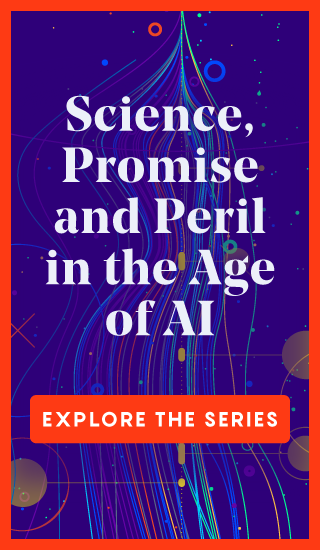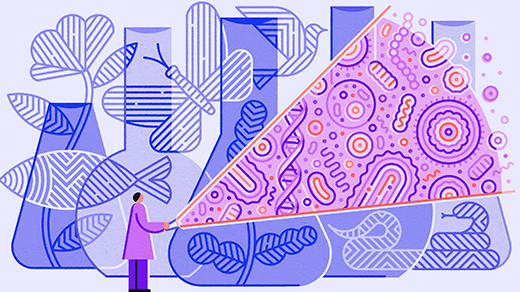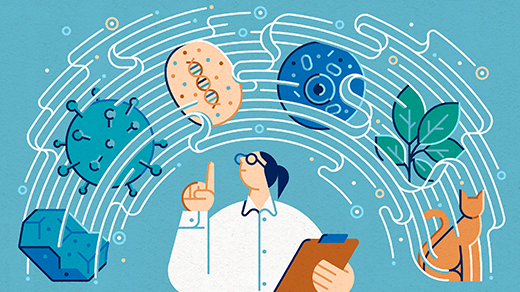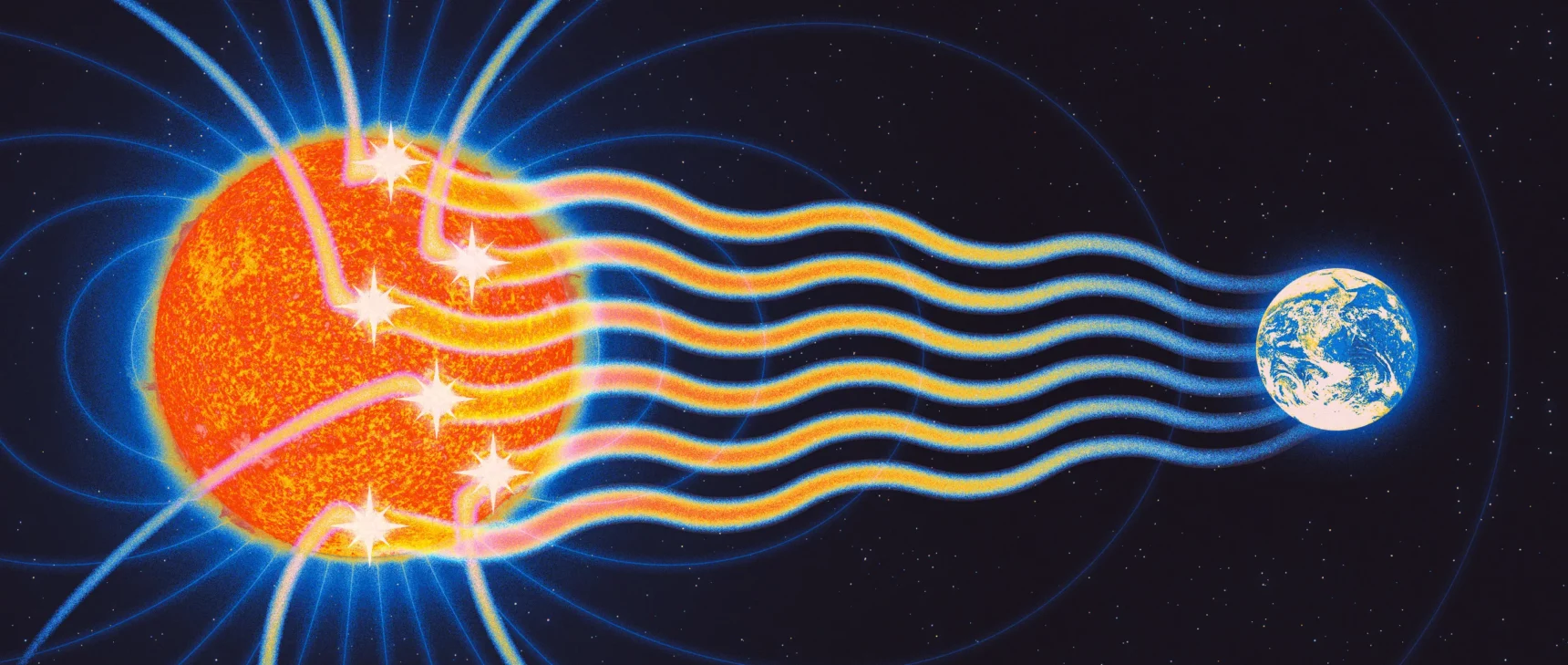How Loneliness Reshapes the Brain
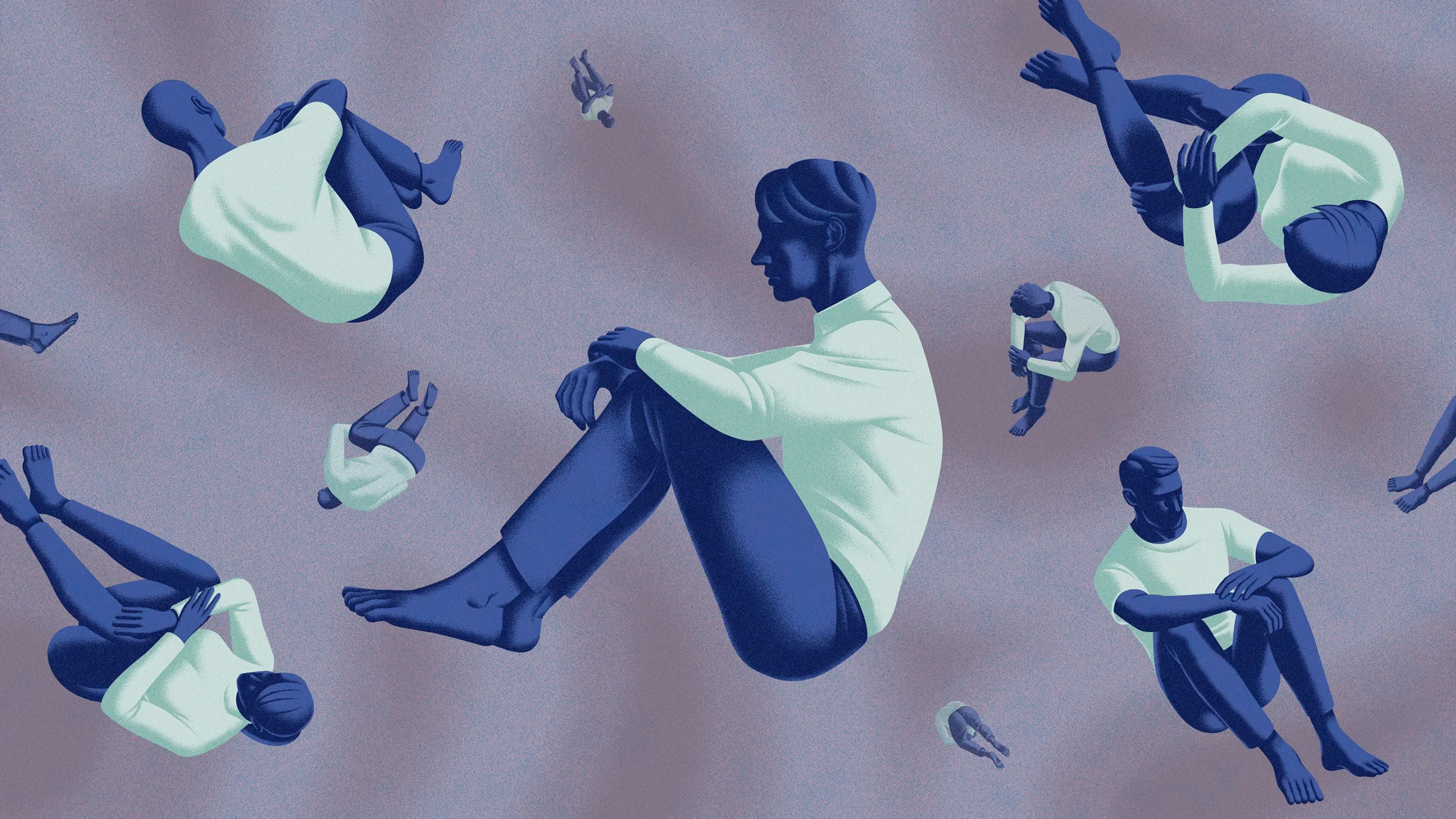
Loneliness doesn’t just make people feel isolated. It alters their brain in ways that can hinder their ability to trust and connect to others.
Kouzou Sakai for Quanta Magazine
Introduction
The Neumayer III polar station sits near the edge of Antarctica’s unforgiving Ekström Ice Shelf. During the winter, when temperatures can plunge below minus 50 degrees Celsius and the winds can climb to more than 100 kilometers per hour, no one can come or go from the station. Its isolation is essential to the meteorological, atmospheric and geophysical science experiments conducted there by the mere handful of scientists who staff the station during the winter months and endure its frigid loneliness.
But a few years ago, the station also became the site for a study of loneliness itself. A team of scientists in Germany wanted to see whether the social isolation and environmental monotony marked the brains of people making long Antarctic stays. Eight expeditioners working at the Neumayer III station for 14 months agreed to have their brains scanned before and after their mission and to have their brain chemistry and cognitive performance monitored during their stay. (A ninth crew member also participated but could not have their brain scanned for medical reasons.)
As the researchers described in 2019, in comparison to a control group, the socially isolated team lost volume in their prefrontal cortex — the region at the front of the brain, just behind the forehead, that is chiefly responsible for decision-making and problem-solving. They also had lower levels of brain-derived neurotrophic factor, a protein that nurtures the development and survival of nerve cells in the brain. The reduction persisted for at least a month and a half after the team’s return from Antarctica.
It’s uncertain how much of this was due purely to the social isolation of the experience. But the results are consistent with evidence from more recent studies that chronic loneliness significantly alters the brain in ways that only worsen the problem.
Neuroscience suggests that loneliness doesn’t necessarily result from a lack of opportunity to meet others or a fear of social interactions. Instead, circuits in our brain and changes in our behavior can trap us in a catch-22 situation: While we desire connection with others, we view them as unreliable, judgmental and unfriendly. Consequently, we keep our distance, consciously or unconsciously spurning potential opportunities for connections.
Loneliness can be difficult to study empirically because it is entirely subjective. Social isolation, a related condition, is different — it’s an objective measure of how few relationships a person has. The experience of loneliness has to be self-reported, although researchers have developed tools such as the UCLA Loneliness Scale to help with assessing the depths of an individual’s feelings.
From such work, it’s clear that the physical and psychological toll of loneliness across the globe is profound. In one survey, 22% of Americans and 23% of British people said they felt lonely always or often. And that was before the pandemic. As of October 2020, 36% of Americans reported “serious loneliness.”

The remote Neumayer III polar research station was the setting for an experiment that studied how the brains of participants changed while they were isolated for 14 months in Antarctica.
Stefan Christmann/Alfred-Wegener-Institute
But loneliness doesn’t merely feel bad: It takes a toll on our health. It can lead to high blood pressure, stroke and heart disease. It can also double the risk of Type 2 diabetes and raise the likelihood of dementia by 40%. As a consequence, chronically lonely people tend to have an 83% higher mortality risk than those who feel less isolated.
Organizations and governments often attempt to help with loneliness by encouraging people to go out more and by setting up hobby clubs, community gardens and craft groups. Yet as the neuroscience shows, getting rid of loneliness isn’t always that simple.
A Bias Toward Rejection
When neuroscientists from Germany and Israel set out to investigate loneliness a few years ago, they expected to find that its neural underpinnings were like those of social anxiety and involved the amygdala. Often called the fear center of the brain, the amygdala tends to activate when we face things we dread, from snakes to other humans. “We thought, ‘Social anxiety is associated with increased amygdala activity, so this should also be the case for lonely individuals,’” said Jana Lieberz, a doctoral student at the University of Bonn in Germany who was part of the research team.
However, a study that the team published in 2022 revealed that although threatening social situations trigger more amygdala activity in people suffering from social anxiety, they do not have that effect on lonely people. Similarly, people with social anxiety have diminished activity in the reward sections of their brain, and that does not appear to be true for lonely people.

Jana Lieberz, a researcher at the University of Bonn, was part of an international team that looked at the neural underpinnings of loneliness. To their surprise, she said, “the core features of social anxiety were not evident in loneliness.”
Courtesy of Jana Lieberz
“The core features of social anxiety were not evident in loneliness,” Lieberz said. Those results suggest, she said, that treating loneliness simply by telling lonely people to go out and socialize more (the way you can treat a phobia of snakes with exposure) will often not work because it fails to address the root cause of the loneliness. In fact, a recent meta-analysis confirmed that simply providing lonely people with easier access to potential friends has no effect on subjective loneliness.
The problem with loneliness seems to be that it biases our thinking. In behavioral studies, lonely people picked up on negative social signals, such as images of rejection, within 120 milliseconds — twice as quickly as people with satisfying relationships and in less than half the time it takes to blink. Lonely people also preferred to stand farther away from strangers, trusted others less and disliked physical touch.
This may be why the emotional well-being of lonely individuals often follows “a downward spiral,” said Danilo Bzdok, an interdisciplinary researcher at McGill University with a background in neuroscience and machine learning. “They tend to end up with a more negative spin on whatever information they receive — facial expressions, texting, whatever — and that drives them even deeper into this loneliness pit.”
Faults in the Default Network
Bzdok and his colleagues conducted the largest studies to date looking for signatures of loneliness in the human brain — studies involving about 100 times more subjects than any prior ones, according to Bzdok. They used data from the UK Biobank — a biomedical database that contains the brain scans of about 40,000 residents of the United Kingdom, along with information about their social isolation and loneliness.
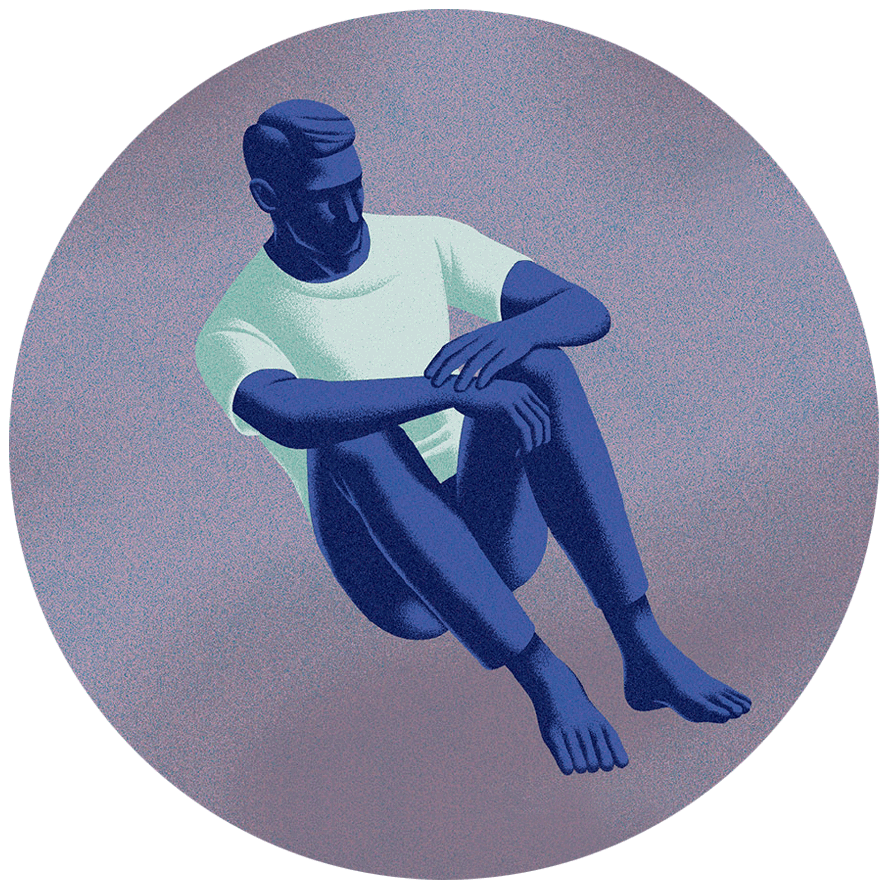
Their results, published in 2020 in Nature Communications, revealed that the brain’s loneliness hot spot nestles within the default network, a part of the brain that activates when we are mentally on standby. “Until 20 years ago we didn’t even know we had this system,” Bzdok said. Yet studies have shown that activity in the default network accounts for most of the brain’s consumption of energy.
Bzdok and his team showed that some regions of the default network are not only larger in chronically lonely people but also more strongly connected to other parts of the brain. Moreover, the default network seems to be involved in many of the distinctive abilities that have evolved in humans — such as language, anticipating the future and causal reasoning. More generally, the default network activates when we think about other people, including when we interpret their intentions.
The findings on default network connectivity provided neuroimaging evidence to support previous discoveries by psychologists that lonely people tend to daydream about social interactions, get easily nostalgic about past social events, and even anthropomorphize their pets, talking to their cats as if they were human, for example. “It would require the default network to do that too,” Bzdok said.
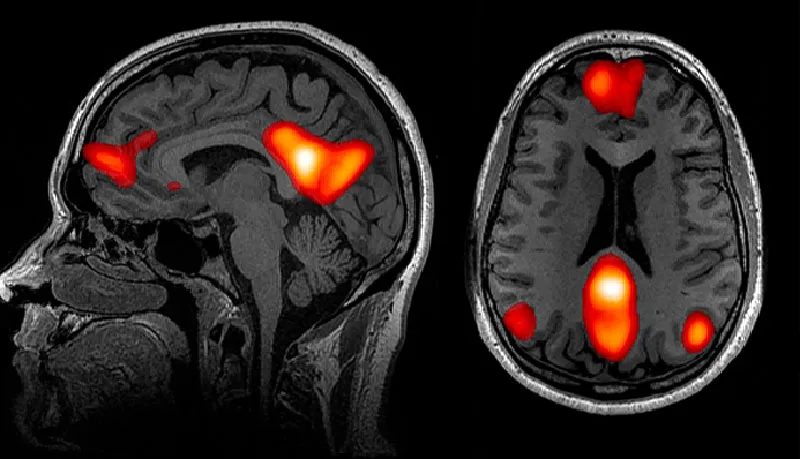
Functional magnetic resonance imaging of the human brain reveals some of the regions associated with the default network — a collection of neural centers that are most active when we think about other people.
John Graner, Terrence Oakes, Louis French and Gerard Riedy
While loneliness can lead to a rich imaginary social life, it can make real-life social encounters less rewarding. A reason why may have been identified in a 2021 study by Bzdok and his colleagues that was also based on the voluminous UK Biobank data. They looked separately at socially isolated people and at people with low social support, as measured by a lack of someone to confide in on a daily or almost daily basis. The researchers found that in all such individuals, the orbitofrontal cortex — a part of the brain linked to processing rewards — was smaller.
Last year, a large brain-imaging study based on data from more than 1,300 Japanese volunteers revealed that greater loneliness is associated with stronger functional connections in the brain area that handles visual attention. This finding supports previous reports from eye-tracking studies that lonely people tend to focus excessively on unpleasant social cues, such as being ignored by others.
A Deep, Uncomfortable Craving
And yet, although lonely people may find encounters with others uncomfortable and unrewarding, they still seem to crave connection. The late John Cacioppo, a University of Chicago neuroscientist whose research earned him the nickname “Dr. Loneliness,” hypothesized that loneliness is an evolved adaptation, similar to hunger, signaling that something has gone awry in our lives. Just as hunger motivates us to look for food, loneliness should drive us to seek out connection to others. For our ancestors on the African savanna, whose survival probably depended on having ties to a group, that social impulse might have been a matter of life or death.
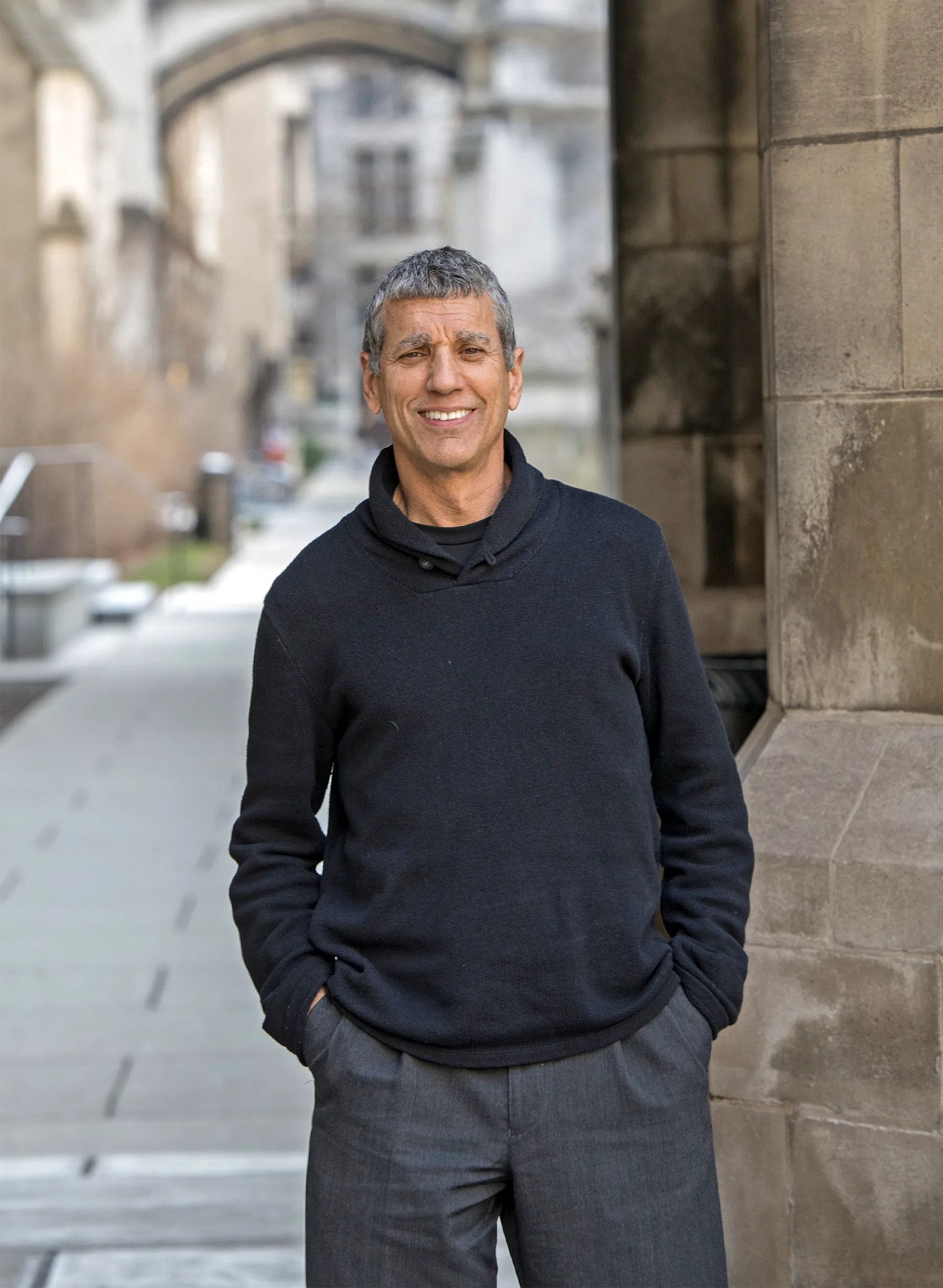
The late neuroscientist John Cacioppo theorized that loneliness might be an evolved adaptation. Just as the feeling of hunger motivates us to eat, loneliness might exist to drive us to seek out social contact.
Robert Kozloff
Recent brain imaging data supports the idea that loneliness is that deeply rooted in our psyche. In one study, Livia Tomova, a research associate in neuroscience at the University of Cambridge, and her colleagues asked 40 people to fast for 10 hours, then to have their brains scanned while they looked at pictures of mouth-watering foods. Subsequently, the same volunteers had to spend 10 hours alone — without phones, email or even novels as surrogates for contact. Then they had a second brain scan, this time while looking at pictures of happy groups of friends. When the scientists compared the brain scans of these individuals, the brain activation patterns from when they were hungry and when they felt lonely were remarkably alike.
To Tomova, the experiment underlined an important truth about loneliness: If just 10 hours without social contact is enough to elicit essentially the same neural signals as being deprived of food, “it highlights how basic our need to connect with others is,” she said.
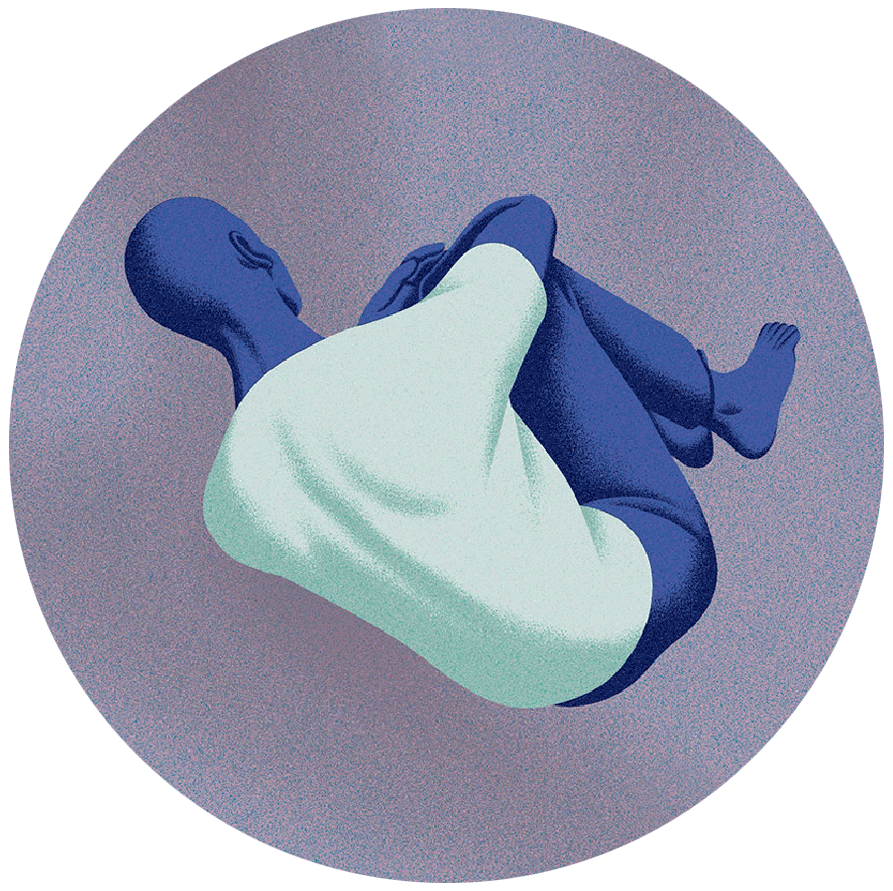
Bigger Brains and More Friends
Recent studies also appear to confirm an evolutionary theory called the social brain hypothesis, which proposes that a busy social life is linked to bigger brains. The idea originated as a theory about how brains might have changed through evolution, but the larger brain size seems to emerge directly from life experiences too. In general, nonhuman primates in captivity that live in larger social groups or share spaces with more cage mates have larger brains. More specifically, the primates have more gray matter in their prefrontal cortex.
Humans are not much different, research suggests. A 2022 study found that elderly lonely people often have atrophy in parts of the brain including the thalamus, which processes emotions, and the hippocampus, a memory center. These changes, the authors suggested, could help explain links between loneliness and dementia.
Of course, the chicken-and-egg question about all these findings is: Do differences in the brain predispose us to loneliness, or does loneliness rewire and shrink the brain? According to Bzdok, it’s not currently possible to solve this puzzle. He believes, however, that the causality may point both ways.
Primate studies and the results of the Neumayer III polar station experiment show that experience and social environment can exert a powerful influence on the structure of an individual’s brain, hard-wiring the changes that loneliness can cause. On the other hand, studies of twins have shown that loneliness is partly heritable: Almost 50% of the variation in individuals’ feelings of loneliness can be explained by genetic differences.

Danilo Bzdok, a researcher at McGill University, has led some of the largest studies on the effects of loneliness in the human brain, drawing from the massive UK Biobank biomedical database.
Owen Egan
People suffering from chronic loneliness are not irretrievably locked into those feelings by nature and nurture. Studies show that cognitive therapies can be effective at reducing loneliness by training people to recognize how their behaviors and thought patterns hinder them from forming the kinds of connections they value. And better interventions for loneliness and social isolation should be possible.
Take a recent study in which Lieberz and her colleagues looked at the brain activity in people playing a trust-based game. In the brain scans of lonely people, one brain region was far less active than in social people. That region, the insula, tends to activate when we examine our gut feelings, Lieberz explained. “That might be a reason why lonely people have problems trusting others — they cannot rely on their [gut] feelings,” she said. Interventions that target trust could therefore be part of a solution to the catch-22 of loneliness.
Another idea is to encourage synchrony. Research shows that one key to how much people like and trust each other lies in how closely their behaviors and reactions match from moment to moment. This synchrony between individuals can be as simple as reciprocating a smile or mirroring body language during conversation, or as elaborate as singing in a choir or being part of a rowing team. In a study published a year ago, Lieberz and her colleagues showed that lonely people struggle to synchronize with others, and that this discordance causes the regions of their brain responsible for observing actions to go into overdrive. Coaching lonely people in how to join in with the actions of others could be another strategic intervention to consider. It won’t cure loneliness by itself, “but it may be a starting point,” Lieberz said.
And if all else fails, there could be new chemical therapies. In one experiment conducted in Switzerland, after volunteers took psilocybin, the psychoactive compound in magic mushrooms, they reported feeling less socially excluded. Scans of their brains showed less activity in areas that process painful social experiences.
While interventions such as cognitive behavioral therapy, promoting trust and synchrony, or even ingesting magic mushrooms could help treat chronic loneliness, transient feelings of solitude will most likely always remain part of the human experience. And there is nothing wrong with that, Tomova said.
She compares loneliness to stress: It’s unpleasant but not necessarily negative. “It provides energy to the body, and then we can deal with challenges,” she said. “It becomes problematic when it’s chronic because our bodies are not meant to be in this constant state. That’s when our adaptive mechanisms ultimately break down.”

